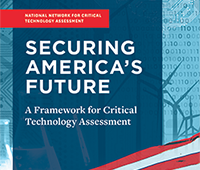A new approach to evaluating research papers exploits social bookmarking
tools to extract relevance. Details are reported in the latest issue of
the International Journal of Internet Technology and Secured Transactions.
Social
bookmarking systems are almost indispensible. Very few of us do not use
at least one system whether it’s Delicious, Connotea, Trunk.ly, Reddit
or any of countless others. For Academics and researchers CiteULike is
one of the most popular and has been around since November 2004.
CiteULike (http://www.CiteULike.org)
allows users to bookmark references but also embeds more conventional
bibliographic management. As users of such systems quickly learn the
only way to make them useful for others is to ensure that you tag your
references comprehensively, but selectively.
On
the whole, social bookmarking is very useful but it could be even more
so if, rather than using similarity ranking or query-dependent ranking
for generating search results if it had a better ranking system.
Researchers
in Thailand have now proposed “CiteRank”, a combination of a similarity
ranking with a static ranking. “Similarity ranking measures the match
between a query and a research paper index,” they explain. “While a
static ranking, or a query-independent ranking, measures the quality of a
research paper.” Siripun Sanguansintukul of Chulalongkorn University in
Bangkok and colleagues have used a group of factors including number of
groups citing the posted paper, year of publication, research paper
post date, and priority of a research paper to determine a static
ranking score, which is then combined with the query-independent measure
to give the CiteRank.
The
team tested their new ranking algorithm by asking literature
researchers to rate the results it produced in ranking research papers
obtained from the search engines based on an index that uses, TTA,
tag-title-abstract. The weighted algorithm CiteRank 80:20 in which a
combination of similarity ranking 80% and static ranking 20% was most
effective. They found that many literature researchers preferred to read
more recent paper or just-posted papers but they also rated highly
classic papers that emerged in the results if they were posted across
different user groups or communities. Users found good papers based on
priority rating but TTA was still important.
“CiteRank
combines static ranking with similarity ranking to enhance the
effectiveness of the ranking order,” explains Sanguansintukul.
“Similarity ranking measures the similarity of the text (query) with the
document. Static ranking employed the factors posted on paper. Four
factors used are: year of publication, posted time, priority rating and
number of groups that contained the posted paper.”
“Improving
indexing not only enhances the performance of academic paper searches,
but also all document searches in general. Future research in the area
consists of extending the personalization; creating user profiling and
recommender system on research paper searching.” the team says. The
experimental factors that emerged from the study, can help in the
optimization of the algorithm to adjust rankings and to improve search
results still further.
“CiteRank: combination similarity and static ranking with research paper searching” in International Journal of Internet Technology and Secured Transactions, 2011, 3, 161-177




